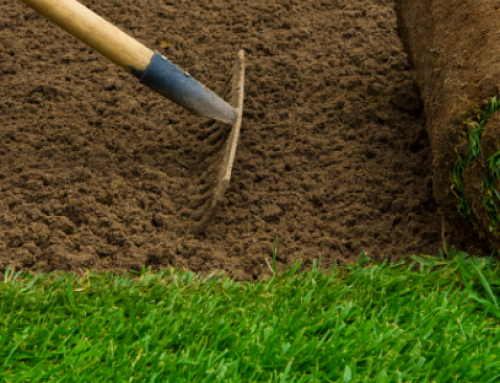Congratulations on your newly sodded lawn. A newly sodded lawn can be just like having a newborn baby with the most important question, WHAT NOW?! You have made the commitment to make this huge investment and want to do everything that you hear is good for your lawn, but how can you know what is needed and what is just opinion? We are here to help you take the right steps during the first few crucial weeks of your new sods life.
WATERING
During the first 10 days you will want to be sure to water your new lawn everyday and ensure that the lawn is getting an
inch of water per each watering cycle. The best way to know if your lawn is getting it’s 1 in of water to is use a small rain gauge inside the sprinkler zone and once the cycle is complete go out and check the water measurement in the rain gauge and adjust accordingly. It is crucial to check your sprinkler zones just to be sure that every part of your lawn is covered in the watering cycle. Take rainfall into consideration to save not only water and money, but to save your lawn from drowning. You also want to pay close attention to your lawn because it will tell you when it is not getting enough water. The blades of grass will fold in half or start to curl if they aren’t getting enough water. This usually happens in areas around the edges and near sidewalks/driveways.
Once the new lawn is established you will need to cut back your watering to avoid shallow roots. It is always best to mimic our natural environment by watering heavily every few days rather than watering lightly every day. Watering needs will vary based upon the type of soil that is present. For example, sandier soils will need less water but more frequent than heavy clay soils which need more water, less often.
FERTILIZATION
Using a “New Lawn Starter” fertilization is very beneficial to your new sod. As we learned in a previous blog, “What are those fertilizer labels trying to tell you”, the middle number of the fertilizer is the phosphorus which promotes root growth which is what we need when establishing a new lawn. We
recommend the “New Lawn Starter” from Fertilome has a 9-13-7 label which stands up to its name since it has a higher rate of phosphorus.
It is also a good idea to put down a granular pesticide and fungicide when installing a new lawn. When installing new grass in an area near older grass, the new grass becomes more vulnerable to insects and diseases since its roots are exposed and its getting more water than an established lawn. This will help you protect your new investment.
MOWING
“When do I mow?” is the most common questions we hear from customers that are installing new lawns. We recommend to wait until your sod has rooted into the soil which is usually between 10-14 days after being installed. Just to be sure your sod is rooted, you can lightly tug on a few areas in your yard and if it doesn’t come up you are safe; however, if it does come up, put it back down and wait a few more days before you mow. When you are ready for your first mowing, set your mower to the highest setting to ensure you will not be removing no more than 1/3 of the blade.
A QUICK RECAP
Water your lawn everyday, avoiding nights, ensuring to get 1 in of water per cycle. Keep an eye for any signs your new lawn
might be trying to tell you by changing color or shape. Once established mimic the natural environment to avoid shallow roots. Fertilize your lawn with a fertilizer specifically made for new lawns to quickly established healthy roots. You can protect your new investment by putting down a granular insecticide and fungicide. Lastly, more your lawn when it is has established itself. This usually take 10-14 days after installing.





